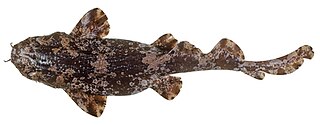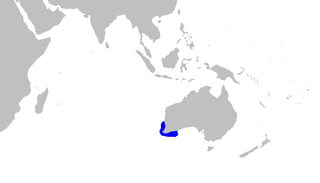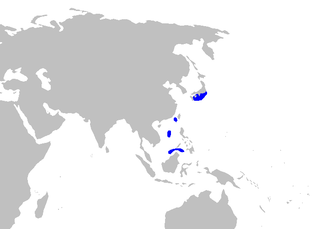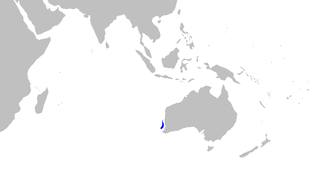
"Sardine" and "pilchard" are common names used to refer to various small, oily fish in the herring family Clupeidae. The term "sardine" was first used in English during the early 15th century and may come from the Mediterranean island of Sardinia, around which sardines were once abundant.

The Ross's gull is a small gull, the only species in its genus, although it has been suggested it should be moved to the genus Hydrocoloeus, which otherwise only includes the little gull. This bird is named after the British explorer James Clark Ross. Its breeding grounds were first discovered in 1905 by Sergei Aleksandrovich Buturlin near village of Pokhodsk in North-Eastern Yakutia, while visiting the area as a judge. The genus name Rhodostethia is from Ancient Greek rhodon, "rose", and stethos, "breast". The specific rosea is Latin for "rose-coloured".

Pityriasis rosea is a type of skin rash. Classically, it begins with a single red and slightly scaly area known as a "herald patch". This is then followed, days to weeks later, by a pink whole body rash. It typically lasts less than three months and goes away without treatment. Sometime a fever may occur before the start of the rash or itchiness may be present, but often there are few other symptoms.

The cobbler wobbegong, Sutorectus tentaculatus, is a carpet shark in the family Orectolobidae, the only member of the genus Sutorectus. It is found in the subtropical eastern Indian Ocean around Western Australia between latitudes 26° S and 35° S. It is frequently found in rocky and coral reef areas. Cobbler wobbegongs reach a length of 92 cm. It has unbranched dermal lobes on the head, rows of warty tubercles along the back and black spots on the body and fins.

The Australian marbled catshark is a catshark of the family Scyliorhinidae, found in the eastern Indian Ocean, endemic to Western Australia between latitudes 12° S and 21° S, from the surface to 245 m (800 ft). Its length is up to 60 cm (24 in) and it typically inhabits coastal waters with sandy or rocky bottoms.

The Australian blackspotted catshark is a catshark of the family Scyliorhinidae in the order Carcharhiniformes. It is endemic to Western Australia in the eastern Indian Ocean between latitudes 28° S and 36° S. It can grow up to 67 cm.

The Azores dogfish is a very rare sleeper shark of the family Somniosidae. It is known only from the holotype caught north of the Azores.

The spatulasnout catshark, also known as the Borneo catshark or flatnose catshark, is a catshark of the family Scyliorhinidae, found in the western Pacific between 35°N and 1° N. Its length is up to 80 cm.

The ginger carpetshark is a species of carpetshark of the family Parascylliidae endemic to the waters off western Australia. It is a small fish at only 78.1 cm (2.56 ft) TL in length in females and harmless to humans. Its depth range is 204–245 m (669–804 ft) on the upper continental shelf. It is known from only three specimens, and so biological and population data are lacking. It is likely not under threat due to its depth range, but its limited range may make it vulnerable to fishing. Reproduction is oviparous and embryos feed solely on yolk.

The starry sturgeon also known as stellate sturgeon or sevruga, is a species of sturgeon. It is native to the Black, Azov, Caspian and Aegean sea basins, but it has been extirpated from the last and it is predicted that the remaining natural population will follow soon due to overfishing. It is considered critically endangered by the IUCN and international trade in this species is restricted by CITES. The starry sturgeon is an anadromous species, which migrates up rivers to spawn.

Phyla nodiflora, the frog fruit, sawtooth fogfruit, or turkey tangle, is an ornamental plant in the Verbenaceae family, and is native to South America and the United States. It can be found in tropical areas around the globe, a naturalized species in many places. This plant is cited in Flora Brasiliensis by Carl Friedrich Philipp von Martius.
Mesua rosea is a species of flowering plant in the family Calophyllaceae. It is a tree endemic to Peninsular Malaysia. It is threatened by habitat loss.
Geocrinia rosea, the Karri or Roseate Frog is a species in the family, Myobatrachidae. It is endemic to Southwest Australia.

Achatinella bulimoides is a species of air-breathing land snail, a terrestrial pulmonate gastropod mollusk in the family Achatinellidae. This species is endemic to Hawaii.

Partula rosea is a species of air-breathing tropical land snail, a terrestrial pulmonate gastropod mollusk in the family Partulidae. This species was endemic to Huahine, French Polynesia. It is now extinct in the wild, only existing in captivity.
Gaertnera rosea is a species of plant in the Rubiaceae family. It is endemic to Sri Lanka.

Nephropsis rosea, sometimes called the rosy lobsterette or two-toned lobsterette, is a species of lobster.

The blue jack mackerel is a species of mackerel-like fish in the family Carangidae. Their maximum reported length is 60 cm, with a common length of 25 cm. They are coastal fish found at depths to 370 m off the Bay of Biscay to south Morocco and the western Mediterranean.
Epinephelus undulosus is a fish of a genus of groupers. It is a marine fish that inhabits coral reefs in the Indo-Pacific region. They are produced through aquaculture and commercially fished.

















